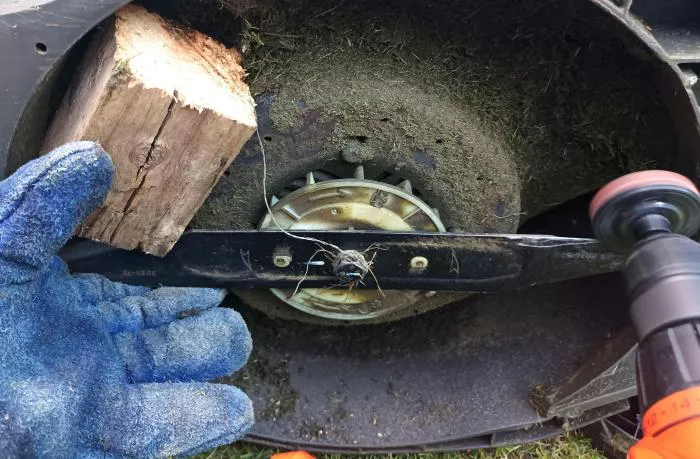A sharp lawn mower blade is essential for maintaining a healthy, lush lawn. Dull blades tear grass instead of cutting it cleanly, leading to uneven growth and increased vulnerability to disease. If you own a Kobalt lawn mower, keeping its blade sharp ensures optimal performance. This guide provides a step-by-step process for sharpening your Kobalt mower blade while also explaining key lawn mower concepts to help you understand the importance of proper maintenance.
Why Sharpening Your Lawn Mower Blade Matters?
A well-maintained lawn mower blade is crucial for several reasons. First, a sharp blade ensures a clean cut, which promotes healthier grass. When grass is torn rather than sliced, it develops brown tips and becomes more susceptible to pests and diseases. Second, a sharp blade reduces strain on the mower’s engine, improving fuel efficiency and extending the machine’s lifespan. Finally, a properly sharpened blade ensures even cutting, preventing an unsightly, patchy lawn.
Kobalt lawn mowers are known for their durability and performance, but even the best mower will underperform if the blade is dull. Regular sharpening—typically every 20 to 25 hours of use—keeps your mower running smoothly.
Tools Needed for Sharpening a Kobalt Lawn Mower Blade
Before starting, gather the necessary tools to ensure a safe and effective sharpening process. You will need:
Work gloves: Protect your hands from sharp edges.
Safety goggles: Prevent metal shavings from entering your eyes.
Adjustable wrench or socket set: Required to remove the blade bolt.
Vise or sturdy clamp: Secures the blade while sharpening.
File or bench grinder: A hand file is safer for beginners, while a grinder speeds up the process.
Balancing tool (optional): Ensures the blade is balanced after sharpening.
Rag or brush: Cleans debris from the blade.
Step-by-Step Guide to Sharpening a Kobalt Lawn Mower Blade
Disconnect the Spark Plug
Safety is the top priority when working with lawn mowers. Before removing the blade, disconnect the spark plug to prevent accidental engine starts. This step is non-negotiable, as even a slight movement of the mower’s flywheel could cause serious injury.
Remove the Blade
Turn the mower on its side, ensuring the air filter faces upward to avoid oil leaks. Use a wrench or socket set to loosen the bolt holding the blade in place. Since the bolt may be tight due to grass buildup and vibration, applying penetrating oil can help loosen it. Once removed, inspect the blade for cracks or excessive wear. If the blade is damaged, replacement is better than sharpening.
Clean the Blade
Grass clippings, dirt, and rust can interfere with sharpening. Use a stiff brush or rag to clean the blade thoroughly. If rust is present, soaking the blade in a vinegar solution or using a wire brush can help remove it. A clean blade ensures a smoother sharpening process.
Secure the Blade for Sharpening
Place the blade in a vise or clamp it securely to a workbench. This prevents movement while sharpening and reduces the risk of injury. Ensure the cutting edge is facing upward for easy access.
Sharpen the Blade
Using a file
Follow the original angle of the blade (usually between 30 to 45 degrees). Push the file in one direction along the edge, maintaining consistent pressure. Avoid back-and-forth filing, as it can create an uneven edge. Repeat until the edge is sharp, then flip the blade and sharpen the other side evenly.
Using a bench grinder
Hold the blade steady and lightly press it against the grinding wheel, following the original bevel. Move the blade back and forth to avoid overheating, which can weaken the metal. Dip the blade in water occasionally to cool it down.
Check Blade Balance
An unbalanced blade causes vibration, which can damage the mower’s engine. To check balance, hang the blade on a nail or use a balancing tool. If one side dips, file a small amount of metal from the heavier side until the blade sits level.
Reinstall the Blade
Once sharpened and balanced, reattach the blade to the mower, ensuring it is positioned correctly. Tighten the bolt securely, but avoid over-tightening, which can strip the threads. Reconnect the spark plug, and your Kobalt mower is ready for use.
Additional Lawn Mower Maintenance Tips
Sharpening the blade is just one part of lawn mower upkeep. To keep your Kobalt mower in top condition, follow these additional maintenance steps:
Change the oil regularly: Old oil reduces engine efficiency. Check the manufacturer’s recommendations for oil change intervals.
Replace the air filter: A clogged air filter restricts airflow, making the engine work harder.
Clean the undercarriage: Grass buildup under the mower deck affects cutting performance.
Inspect the spark plug: A worn spark plug can cause starting issues. Replace it annually if needed.
Conclusion
Sharpening your Kobalt lawn mower blade is a simple yet vital task that enhances cutting performance and lawn health. By following this guide, you can ensure a clean, even cut while prolonging the life of your mower. Regular maintenance, including blade sharpening, oil changes, and air filter checks, keeps your equipment running smoothly season after season. With these steps, your lawn will look its best, and your Kobalt mower will remain a reliable tool for years to come.
By understanding the importance of blade sharpening and proper mower care, you can achieve professional-level results at home. A well-maintained mower not only saves time and money but also contributes to a healthier, more attractive lawn.
Related topics:
- WHO MAKES KOBALT ELECTRIC LAWN MOWERS?
- HOW TO USE KOBALT BRUSHLESS LAWN MOWER: A COMPREHENSIVE GUIDE
- 5 TOP RATED PUSH LAWN MOWERS

